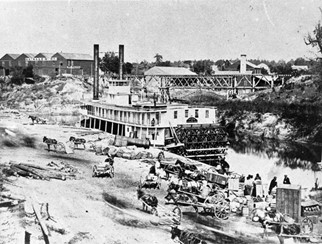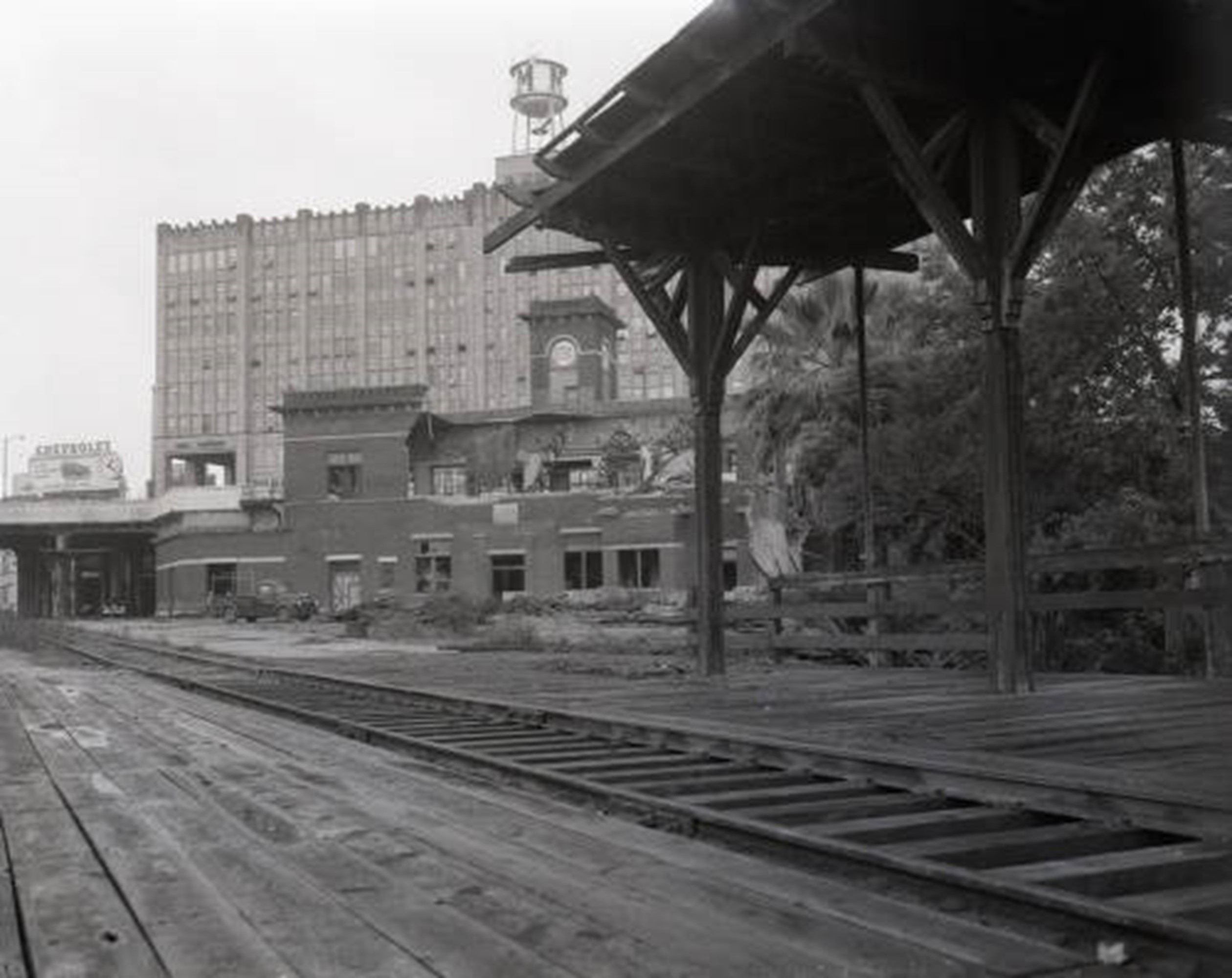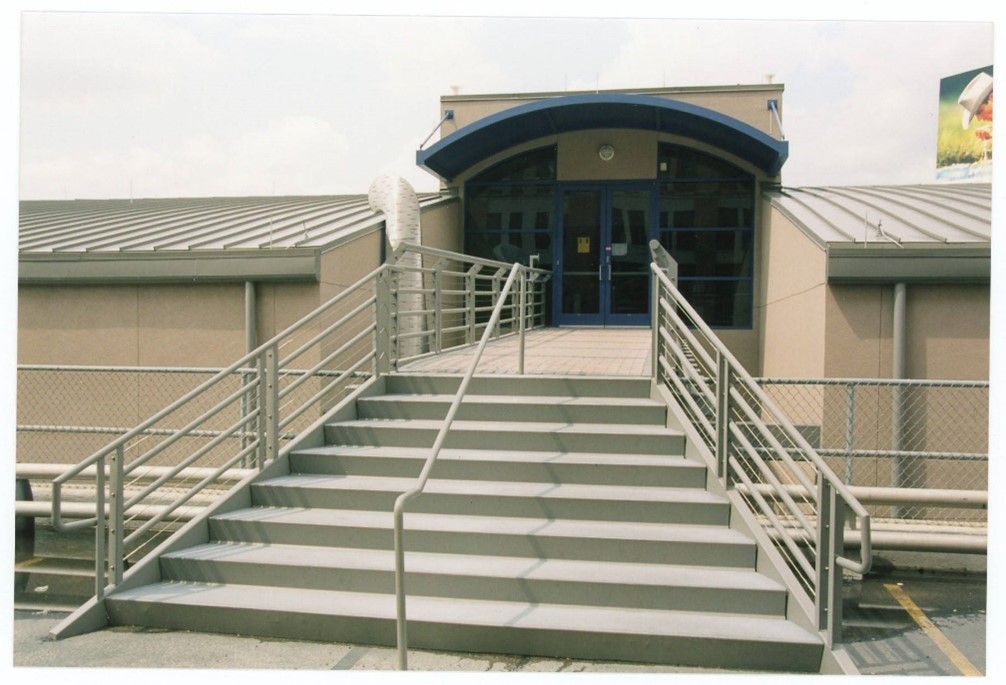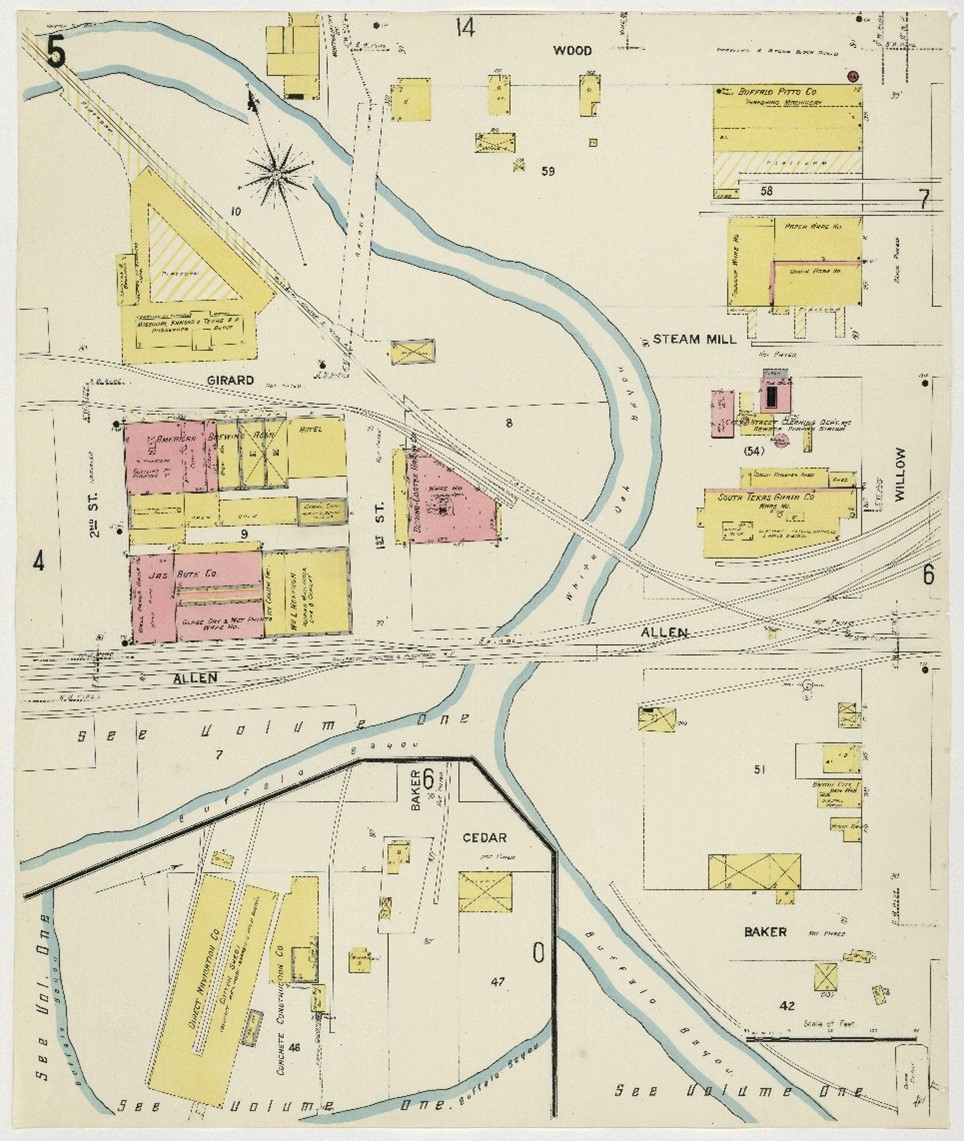Funded by the Houston Endowment, the Jesse H. Jones Student Life Center was built
in 1997 to give the growing University of Houston-Downtown a hub for student activities. For more than 20 years, the Student
Life Center served as THE place for students to gather, play sports, and work out.
No one would have guessed that a little more than a hundred years earlier, the site
played a shocking role in the Civil War.
of Houston-Downtown a hub for student activities. For more than 20 years, the Student
Life Center served as THE place for students to gather, play sports, and work out.
No one would have guessed that a little more than a hundred years earlier, the site
played a shocking role in the Civil War.
In the early years of Houston's history, Allen & Fulton Cotton Warehouses stood on the site of the Student Life Center overlooking White Oak Bayou. During the Civil War, the warehouses were converted into a Confederate prison camp as a temporary stop before prisoners were either paroled or sent to the permanent prisons at Camp Groce in Hempstead or Camp Ford in Tyler.
During the Battle of Galveston on January 1, 1863, 350 men from the Massachusetts Volunteers of the 42nd Regiment and those serving on the Revenue Cutter U.S.S. Harriet Lane, were captured and transferred to Houston via rail. Enlisted soldiers were marched down Main Street to be locked up in the old warehouses. Officers were confined in the Kennedy Building at the corner of Travis and Congress streets.
Black soldiers and sailors captured in the Battle of Galveston were forced to build fortifications around the city and harbor in Galveston. They were considered "runaway" slaves and were "returned" to slavery, and many were later sold in the area for $500 each. Those soldiers who were not sold were sent to the state penitentiary in Huntsville.
 Private Alexander Hobbs, a white Union soldier held at the prison in Houston, wrote
in his diary on January 15, 1863: "Six [coulered] men have been taken away to prison,
four of them belonging to the Harriet Lane and two of them from our company." He
continued, "All but one or two were free born – but all are now to be sold together."
Private Alexander Hobbs, a white Union soldier held at the prison in Houston, wrote
in his diary on January 15, 1863: "Six [coulered] men have been taken away to prison,
four of them belonging to the Harriet Lane and two of them from our company." He
continued, "All but one or two were free born – but all are now to be sold together."
Later that year on September 8, 200 prisoners were held at the camp following the Battle of Sabine Pass.
In the early 20th century, the site experienced yet another transformation: the Missouri-Kansas-Texas Railroad Company passenger station, directly behind the American Brewing Association building. The station was demolished in 1958, and remnants of the tracks have become part of the White Oak Bayou Greenway Trail.
Somehow it seems fitting that what was once industrial, and even served as a wartime prison camp, a place of suffering and isolation, was returned to nature. Now, the site serves as an inviting community green space for Houston's thriving downtown university.


Photo Credits (in order of appearance):
St. Claire Paddleboat (Allen Warehouses where the current One Main Building and Jesse Jones building are located), Citation: MSS0029-01E, Houston Public Library, Houston History Research Center.
M.K. T Station Demolition (1958), Citation: RGD0006N-1958-4502-1, Houston Public Library, Houston History Research Center.
Jesse Jones Student Life Center, Citation: Provided by UHD Archives.
Sanborn Map 1907 Volume 2 Sheet 5, Citation: Courtesy of the University of Texas Libraries, The University of Texas at Austin.
References
Murphy, James Vernon. "The diary of Private Alexander Hobbs, 42nd Massachusetts Regiment: The life of a Union soldier in Texas." (1996) Master's Thesis, Rice University. https://hdl.handle.net/1911/14083.
Alexander Hobbs diary and bible, 1861-1863, MS 370, Woodson Research Center, Fondren Library, Rice University.
Baisley, Kathryn MacDonald. "Houston, Texas, goes to war, 1861-1865." (1976) Master's Thesis, Rice University.
